G.I. Joe Arcade - The Best Sound Effects
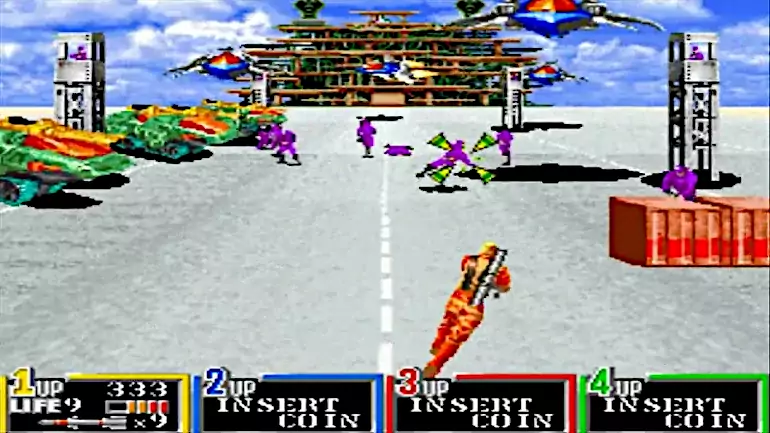
This review of G.I. Joe Arcade can be approached from two distinct angles. On one hand, we can delve into Konami's success in the arcade scene a few years ago or, alternatively, discuss the journey of action figures evolving into global classics. Let's begin by focusing on the aspect most closely related to video games. In 1992, Konami internationally distributed an arcade game developed in collaboration with Hasbro, marking the entry of G.I. Joe action heroes into the arcade market. Did they succeed? Absolutely. With our collective enthusiasm for the action figures and the series, it was only natural to find ourselves captivated by the arcade machine.
The G.I. Joe phenomenon emerged in the '80s, achieving success in America and transcending borders, leaving other series in its wake. This success was owed to charismatic characters and articulated action figures. Over the years, the flame of success dimmed, giving rise to lines of figures that ranged from somewhat pathetic (who can forget the ones with real hair?) to others with greater absurdity, such as those based on Street Fighter: The Movie. Nevertheless, even today, many of us fondly remember this miniature world and would not hesitate to try our hand at the arcade machine if we come across it. Moreover, being a Konami game adds a layer of confidence to the experience.
The narrative of the G.I. Joe Arcade soldiers is as simple as it is effective. The world is under the threat of international terrorists, and across various chapters, the G.I. Joe army soldiers must thwart their plans. With charismatic characters, the series thrived by introducing new characters regularly. While the game offered a similar narrative, it was more limited due to the appearance of only four selectable heroes.
Konami presented a storyline where Cobra planned to dominate the planet. To counteract these plans, the four most qualified G.I. Joe heroes invaded the villain's secret bases without waiting to witness the destruction of Earth. Between stages, we glimpse animated sequences, but no more than two or three non-selectable G.I. Joes make an appearance. Perhaps they could have included many more famous characters in these sequences.
Gameplay Overview
If we're on the hunt for an arcade predecessor, we can harken back to legendary games like Cabal. However, the creators of G.I. Joe Arcade skillfully advanced the genre in Konami's distinctive style, delivering entertainment for up to four players simultaneously. The mechanics were straightforward: our character traversed the stage by running toward the background, necessitating lateral movement while aiming.
In terms of controls in G.I. Joe Arcade, we had access to two buttons – one for basic shooting (or a machine gun if acquired) and the second for launching devastating bombs. While the game wasn't overly challenging, there were moments when strategically deploying a bomb became imperative to clear the screen. For the skilled player, it felt like a leisurely stroll in the park.
Throughout a session of G.I. Joe Arcade, players encountered barrels of different colors. Upon destruction, these barrels yielded weapons or replenished life. The variety of items was limited, consisting mainly of bombs, energy, or the machine gun. Noteworthy is the fact that a single hit wouldn't result in immediate death; the hero could withstand two or three hits in each of their two lives. At the game's onset, players would select a character from options like the leader Duke, Snake Eyes, the sweet Scarlett, or the heavily armed Road Block.
Like many other arcade games, this was one to relish with just a handful of coins. Continuing wasn't particularly enjoyable due to the limited three-stage setup, and injecting more money would swiftly bring the experience to a conclusion. Each stage was subdivided into protected sub-levels guarded by formidable enemies, culminating in the ultimate showdown against Cobra. While the final battle might be relatively straightforward, the game's charm and addictiveness reached new heights when enjoyed with three additional friends in the arcade.
While the default movement in most levels had our character instantly running, there were also stages featuring elevator rides while eliminating enemy soldiers. Commendation is due for the game's villains – initially featuring only colored soldiers but gradually escalating to include vehicles, ninjas, and an assortment of deadly creatures.
Graphics of G.I. Joe Arcade
We're delving into a Konami classic, and true to their era, the graphics are a vibrant spectacle. G.I. Joe Arcade showcases charismatic characters set against meticulously detailed backgrounds – and who wouldn't want more of that? With the game confined to just three levels, its designers had the creative freedom to introduce a variety of locales. We embark on a journey that begins on a road, transitions to an elevator, and eventually immerses us in a jungle setting.
Our characters, somewhat peculiarly, consistently face away from us. If you opt for Scarlett, that detail might not bother you much; she boasts some appealing curves. However, exercise caution with the other characters as they are more on the robust side. As highlighted earlier, throughout the levels, we confront a diverse array of enemies in environments that are entirely destructible – even a turret? Fair game.
Music & Sound
While the soundtrack might not be a focal point in a typical shooting arcade game, G.I. Joe Arcade breaks the mold by delivering an animated repertoire featuring catchy choruses borrowed from the series. When our heroes find themselves in the heat of action or make their grand entrance, they unleash their signature battle cry, "Yo Joe!" eliciting a thrilling response from the villains with a resounding "Cobra!" It's undeniably exhilarating. The remaining audio landscape comprises gunfire, explosions, and an assortment of shouts that accompany the demolition of enemy forces – a characteristic soundscape for a game where sound effects take center stage over the music.
Gameplay
Bezel
Below, you can download the bezel or overlay for this game, eliminating the unsightly TV borders, just click here.
Conclusion
While Konami's multiplayer machines consistently deliver entertainment over the years, G.I. Joe Arcade held a unique charm. It wasn't your typical beat'em up; rather, it was a game that required button-pounding teamwork to eliminate little soldiers with friends. Back in those days, it was a thrill to have all your action figures at home, watch the series in the afternoons, and then head to the arcades for a gaming session with friends.
Unfortunately, G.I. Joe Arcade is now a part of the past. Let's not forget it. If you happen to come across it in your town, consider immersing yourself in a gaming session, but beware – your fingers might tire from all the button-mashing.
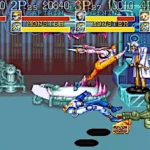 Captain Commando - Capcom's Beloved Mascot
Captain Commando - Capcom's Beloved Mascot The Simpsons Arcade - The Most Fun Beat'em Up
The Simpsons Arcade - The Most Fun Beat'em Up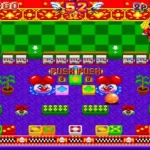 Go Go Mile Smile Arcade: A Classic Retro Gaming Experience
Go Go Mile Smile Arcade: A Classic Retro Gaming Experience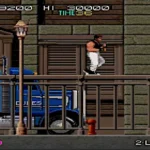 Bad Dudes vs. Dragon Ninja: Reviving the Excitement of 80s Arcade Glory
Bad Dudes vs. Dragon Ninja: Reviving the Excitement of 80s Arcade Glory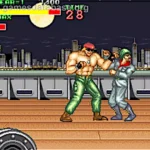 BIG FIGHT: BIG TROUBLE IN THE ATLANTIC OCEAN: Unveiling the Epic Brawl!
BIG FIGHT: BIG TROUBLE IN THE ATLANTIC OCEAN: Unveiling the Epic Brawl! Cadash Unleashed: Exploring a Forgotten Gem
Cadash Unleashed: Exploring a Forgotten Gem

Leave a Reply